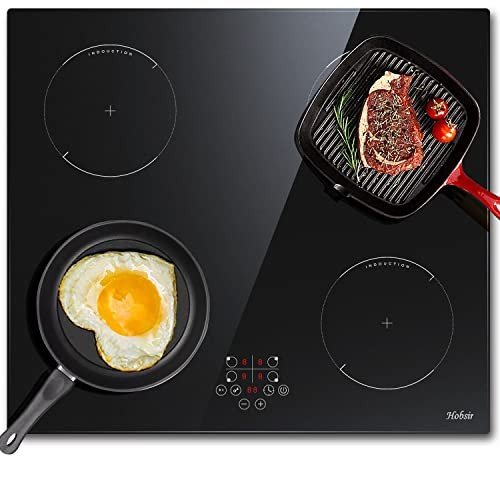There Is No Doubt That You Require Oven And Hob
The Complete Guide to Ovens and Hobs: Choosing the Right Appliances for Your Kitchen
When it concerns creating cooking work of arts, the value of quality kitchen home appliances can not be overemphasized. Ovens and hobs are the heart of any kitchen, making it possible for home cooks and professional chefs alike to create, bake, and sauté delicious meals. Understanding the various kinds of ovens and hobs, in addition to their functions and performances, is important for making educated buying choices. This post provides a thorough appearance at ovens and hobs, helping you browse the choices offered so that you can enhance your kitchen's effectiveness and versatility.
Understanding Ovens
Ovens are vital for cooking and baking and been available in various types to meet diverse culinary needs. Here is an introduction of the most common kinds of ovens:
1. Standard Ovens
Conventional ovens work by heating up the air inside with gas or electric aspects. They are best for baking cakes, roasting meats, and cooking casseroles.
2. Convection Ovens
These ovens utilize a fan to circulate hot air, offering an even temperature throughout, which can substantially decrease cooking times. They are ideal for baking cookies or roasting veggies.
3. Microwave Ovens
Microwaves prepare food quickly utilizing electromagnetic radiation. They are perfect for reheating leftovers or defrosting frozen foods however are not ideal for browning or crisping.
4. Wall Ovens
Incorporating a wall oven into your kitchen design can conserve area and produce a streamlined visual. They operate simply like standard or convection ovens but are built into the wall for simple access.
5. Range Ovens
These ovens integrate stovetop burners with an oven, offering flexibility for those who prefer a single appliance for all cooking needs.
Type
Cooking Method
Best For
Standard
Electric/Gas
Baking, roasting
Convection
Air circulation
Quick cooking, even baking
Microwave
Electromagnetic
Reheating, thawing
Wall Ovens
Electric/Gas
Space-saving, streamlined design
Range Ovens
Electric/Gas
Flexible cooking
Exploring Hobs
Hobs, also referred to as cooktops or stovetops, provide the surface to prepare pans straight over a heat source. Like ovens, hobs are available in different types, which can be categorized as follows:
1. Gas Hobs
These hobs utilize a flame for cooking and supply instant heat control. They are favored by numerous chefs for their responsiveness and accuracy.
2. Electric Hobs
Electric hobs utilize coils or flat surface areas to heat pans. They provide a consistent heat source, however they may take longer to cool off compared to gas hobs.
3. Induction Hobs
Induction hobs utilize electro-magnetic energy to heat pots and pans directly, making them highly efficient and faster to cook. They are also simpler to clean as the surface remains fairly cool.
4. Strong Plate Hobs
These are older technology that utilizes strong metal plates to supply heat. They are durable however are less efficient than contemporary options.
Type
Heat Source
Benefits
Drawbacks
Gas Hobs
Flame
Immediate heat control
Requires gas connection
Electric Hobs
Electric coils
Constant heat
Slower to cool off
Induction Hobs
Electromagnetic
Fast cooking, energy-efficient
Requires suitable pots and pans
Solid Plate Hobs
Solid metal plate
Toughness
Less efficient
Selecting the Right Appliances
Selecting the best oven and hob for your kitchen includes considering numerous elements:
1. Area and Layout
Step your kitchen location to figure out the size and placement of the oven and hob. Guarantee there is appropriate ventilation, specifically for gas home appliances.
2. Cooking Style
Think about how frequently you prepare and the type of meals you prepare. A convection oven might suit devoted bakers, while somebody who often stir-fries may choose an induction hob.
3. Energy Source
Choose the energy source that best fits your way of life. Gas uses instant control, while electric and induction hobs offer ease of use and are frequently more energy-efficient.
4. Budget
Identify your budget plan for kitchen appliances. Ovens and hobs vary significantly in cost, depending upon features and brands. Focus on important features that meet your requirements.
5. Functions
Search for performances such as self-cleaning choices, clever innovation compatibility, particular rack configurations for ovens, and safety features for hobs.
Frequently Asked Questions (FAQs)
Q1: What is the distinction in between a traditional oven and a convection oven?A1: Conventional ovens warm the air within without fans, while stove make use of a fan to flow hot air for more even cooking. Q2: Can I utilize aluminum pots and pans on induction hobs?A2: No, induction hobs need ferrous (magnetic )materials like cast iron or stainless-steel to work effectively. Q3: Do gas hobs heat faster than electric hobs?A3: Yes, gas hobs provide instant heat, making them quicker for cooking compared to electric hobs. Q4: Is it safe to use a microwave oven?A4: Yes, when utilized according to the maker's directions, microwave are considered safe for cooking.
Q5: How typically need to I clean my oven and hob?A5: For optimum efficiency, clean your oven regularly, particularly after spills. Hobs ought to be cleaned down after each usage
to prevent buildup. Ovens and hobs
are essential components of a well-equipped kitchen. Comprehending the various types, their functionalities, and the considerations included in purchasing
them can dramatically improve cooking experiences. Whether one is a casual home cook or a professional chef, investing time in selecting the best devices can result in cooking success and complete satisfaction in the kitchen. By Hobs Sale that align with your cooking design, energy sources that fit your home, and spending plan considerations, you can create an efficient work area that motivates culinary creativity. 